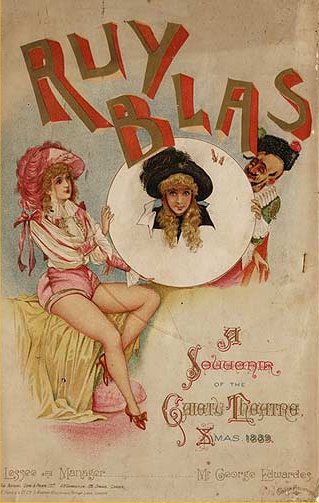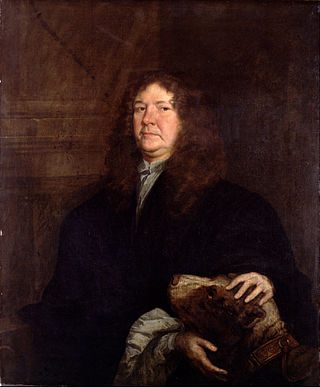Related Research Articles
This article contains information about the literary events and publications of 1780.

A burlesque is a literary, dramatic or musical work intended to cause laughter by caricaturing the manner or spirit of serious works, or by ludicrous treatment of their subjects. The word derives from the Italian burlesco, which, in turn, is derived from the Italian burla – a joke, ridicule or mockery.

In his own time, William Shakespeare (1564–1616) was rated as merely one among many talented playwrights and poets, but since the late 17th century has been considered the supreme playwright and poet of the English language.
Charles Hart was a prominent British Restoration actor.

John Lowin was an English actor.

Shakespeare's plays are a canon of approximately 39 dramatic works written by English poet, playwright, and actor William Shakespeare. The exact number of plays as well as their classifications as tragedy, history, comedy, or otherwise is a matter of scholarly debate. Shakespeare's plays are widely regarded as among the greatest in the English language and are continually performed around the world. The plays have been translated into every major living language.

Victorian burlesque, sometimes known as travesty or extravaganza, is a genre of theatrical entertainment that was popular in Victorian England and in the New York theatre of the mid-19th century. It is a form of parody in which a well-known opera or piece of classical theatre or ballet is adapted into a broad comic play, usually a musical play, usually risqué in style, mocking the theatrical and musical conventions and styles of the original work, and often quoting or pastiching text or music from the original work. Victorian burlesque is one of several forms of burlesque.
Joseph Taylor was a 17th-century English actor. As the successor of Richard Burbage as the leading actor with the King's Men, he was arguably the most important actor in the later Jacobean and the Caroline eras.
Richard Robinson was an actor in English Renaissance theatre and a member of Shakespeare's company the King's Men.
Richard Perkins was a prominent early seventeenth-century actor, most famous for his performance in the role of Barabas in Christopher Marlowe's The Jew of Malta. At the peak of his career in the 1630s, many contemporaries judged Perkins to be the premier tragedian of his generation.
Thomas Pollard was an actor in the King's Men – a prominent comedian in the acting troupe of William Shakespeare and Richard Burbage.
Michael Bowyer (1599–1645) was an actor in English Renaissance theatre in the Jacobean and Caroline eras. He spent most of his maturity with Queen Henrietta's Men, but finished his career with the King's Men. With the former company, he was one of "those of principal note," according to James Wright's Historia Histrionica (1699), one of the troupe's "eminent actors."
William Robbins, also Robins, Robinson, or Robson, was a prominent comic actor in the Jacobean and Caroline eras. During the English Civil War he was a captain in the Royalist army and was killed during the siege of Basing House.
Walter Clun was a noted English actor of the 17th century. His career spanned the difficult period when the theatres were closed during the English Civil War and the Interregnum, from 1642 to 1660.
Nicholas Burt, or Birt or Burght among other variants, was a prominent English actor of the seventeenth century. In a long career, he was perhaps best known as the first actor to play the role of Othello in the Restoration era.
William Wintershall, also Wintersall or Wintersell, was a noted seventeenth-century English actor. His career spanned the difficult years of mid-century, when English theatres were closed from 1642 to 1660, during the English Civil War and the Interregnum.

William Cartwright was an English actor of the seventeenth century, whose career spanned the Caroline era to the Restoration. He is sometimes known as William Cartwright, Junior or William Cartwright the younger to distinguish him from his father, another William Cartwright, an actor of the previous generation.
John Sumner was an English theatre actor during the Caroline era (1625–1642).

A play is a form of drama that primarily consists of dialogue between characters and is intended for theatrical performance rather than mere reading. The creator of a play is known as a playwright.
James Wright (1643–1713), was an antiquary and writer, author of a county history of Rutland (1684), and the Historia Histrionica (1699), an account of theatre in England in the seventeenth century.
References
- ↑ Robert Dodsley, ed., A Select Collection of Old Plays, London, 1744.
- ↑ Dale B. J. Randall, Winter Fruit: English Theatre 1642–1660, Lexington, KY, University Press of Kentucky, 1995; pp. 43-6.
- ↑ Thomas Alan King, The Gendering of Men, 1600–1750: The English Phallus, Madison, WI, University of Wisconsin Press, 2004; pp. 96-7.
- ↑ Paul Menzer, ed., Inside Shakespeare: Essays on the Blackfriars Stage, Selinsgrove, PA, Susquehanna University Press, 2006; pp. 54-5, 60.